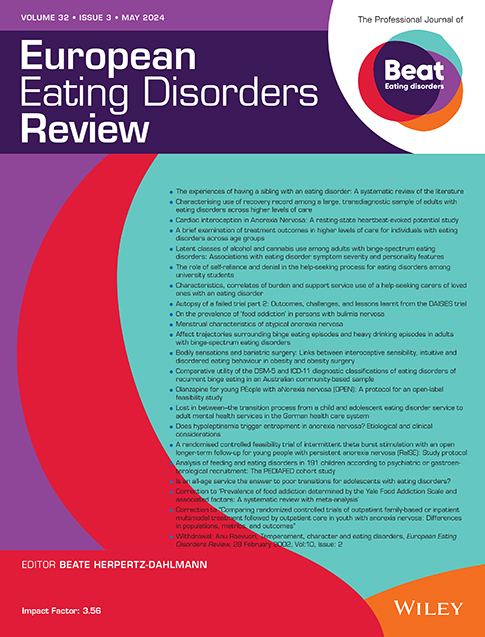Virtual (Self) Reflection: Frequent Videoconferencing Usage Is Uniquely Associated With Body Dissatisfaction and Dietary Restraint Symptoms Among Adults
Abstract
Objective
This study examined the relationship between videoconferencing usage frequency for work/study purposes and eating disorder (ED)-related symptoms, focusing on psychological factors that may heighten vulnerability to such concerns in appearance-focused interactions.
Method
Australia-based participants (N = 1820; 76% female; Mage = 20.28, SD = 4.43) completed an online survey assessing videoconferencing usage frequency for work/study, ED-related symptoms (body dissatisfaction, disordered eating [DE], depression), and psychological factors (appearance-based rejection sensitivity [appearance-RS], self-objectification, body-ideal internalization). Participants were categorized as higher-frequency users (multiple times per week or more; n = 1334; 73%) or lower-frequency users (once per week or less; n = 486; 27%).
Results
Body-ideal internalization and appearance-RS showed small to medium positive associations with all ED-related symptoms. Higher-frequency users reported greater body dissatisfaction and DE symptoms (overall, dieting, and oral control), though these effects were modest, explaining minimal variance beyond established risk factors. Videoconferencing frequency was unrelated to depressive or bulimia/food preoccupation symptoms and rarely moderated psychological factor-symptom relationships, with three exceptions: higher frequency usage modestly weakened the positive association between appearance-RS and DE (overall and oral control) and modestly strengthened the positive association between self-objectification and buimia/food preoccupation DE symptoms.
Conclusions
These findings suggest that frequent work/study-related videoconferencing may be uniquely associated with body dissatisfaction and dietary restraint symptoms, particularly for those with a tendency to self-objectify. Future research into individual differences, usage contexts, and face-related outcomes is warranted.

 求助内容:
求助内容: 应助结果提醒方式:
应助结果提醒方式:


